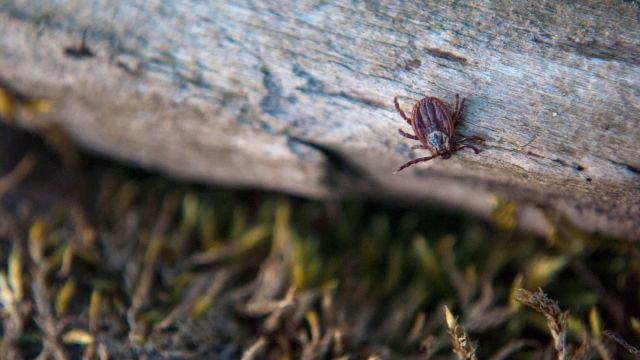The thought of a tick on your body or in your home probably makes you shudder, but if you spend time outdoors, you need to know what to do should you find yourself face-to-face with the critter. We talked with pediatric emergency medicine specialist Parisa Jamshidi, MD, of Rocky Mountain Hospital for Children at Presbyterian/St. Luke’s Medical Center in Denver, to get the facts you need.
What are ticks?
Ticks are a part of the arachnid family along with mites, spiders and scorpions. As external parasites, they feed on the blood of mammals. There are many kinds of ticks, but deer ticks, dog ticks and Lone Star ticks are the most common.
Where do they live?
Ticks like humid, wooded areas with high grass and shrubbery. They especially like leaf litter. They are most active in the spring and summer months, but tick season extends through the fall.
Are they harmful?
Some ticks carry diseases, but the chance a tick will infect you with one is rare, says Dr. Jamshidi. Lyme Disease is the most common tick-related infection, but southern tick-associated rash illness, Rocky Mountain spotted fever (RMSF) and ehrlichiosis come from ticks, too.
According to the Centers for Disease Control and Prevention (CDC), about 300,000 people in the United States are diagnosed with Lyme disease every year, and even less contract the other illnesses. If left untreated, Lyme disease can cause serious health problems, including cardiac and nervous system problems, memory and thinking difficulties, arthritis and nerve damage or paralysis of the muscles in the face.
Prevent tick bites
- Wear protective clothing. The most important thing you can do is cover up. You should wear a hat, long sleeves and pants that are tucked inside your socks when you are in the woods or tall grass. If you go hiking, wear hiking boots so your skin isn’t exposed, and wear light colored clothing so you can spot ticks easily, says Jamshidi.
- Use a repellent. Use a bug repellent when spending time outdoors. “If you’re going camping or hiking, the CDC recommends using a repellent containing 20 percent or more DEET. Products labeled ‘deep woods’ last up to eight hours,” says Jamshidi. You may want to treat clothes, camping gear and shoes, too. Sprays that are made with permethrin will protect your gear for weeks, even after you wash it.
- Keep a tidy yard. If you take good care of your lawn, you’re less likely to have ticks. Mow your lawn regularly, trim bushes and put wood chips or gravel between your yard and heavily wooded areas.
- Steer clear of problem areas. Walk in the center of trails or paths to avoid contact with high shrubbery and grass.
- Shower off. Once you’re back inside, Jamshidi says showering within two or three hours can help wash off unattached ticks.
- Do regular tick checks. Inspect your body for ticks regularly, especially after being outside or in the woods. They are easy to miss, so have someone else check, too. “They love the neck, scalp, armpits and back areas,” says Jamshidi. Also, check your pets for ticks, too. They can unknowingly bring them into the house.
How to remove a tick?
You may not feel or see anything if you have a tick bite, but most of the time, the area will become red. Remove the tick with tweezers. “Grab it firmly, apply pressure and remove it directly from the top. Go as deep in the skin as you can without crushing the tick,” says Jamshidi. Don’t twist or squeeze it, as it may cause them to release bacteria from their saliva, she adds.
After you take it out, simply flush the tick down the toilet and then wash your hands with soap and water. Don’t worry if a piece is lingering inside—it should come out on its own within a few months.
If you’re having a hard time removing it from your skin, see a doctor so it can be removed safely.
When to be concerned
If you develop a rash or fever within a few weeks of removing a tick, see your doctor as soon as possible. Tell your doctor about your recent tick bite, when the bite occurred and where you were when you were bitten.
If you are infected with a tick-borne disease, early diagnosis and treatment are important to prevent long-term complications. Lyme disease and Rocky Mountain spotted fever can be treated with antibiotics, such as doxycycline.
It’s important to remember that these diseases are rare. “Even if you are bitten by a deer tick that has Lyme disease, you only have a 1.2 to 1.4 percent chance of getting Lyme disease,” says Jamshidi. So, don’t panic but do get it looked at.
Medically reviewed in December 2018.






